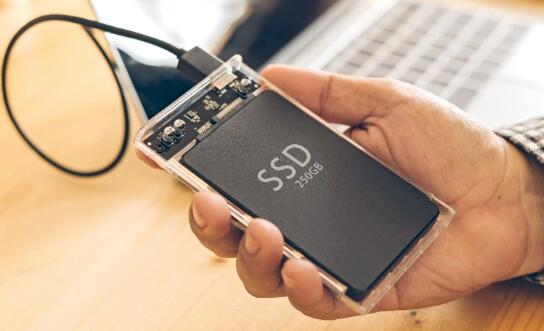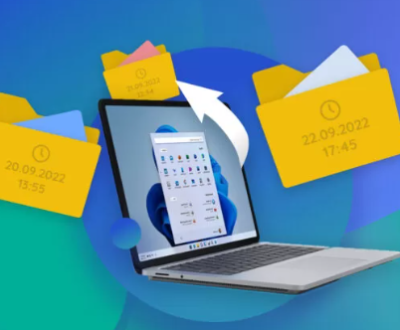Recovering files from an SSD (Solid State Drive) can be a challenging process due to the way SSDs manage data. Unlike traditional hard drives, SSDs use a technology called TRIM that helps optimize performance but can complicate recovery efforts after deletion.
1. SSD Data Management
TRIM Command
The TRIM command is an essential feature of SSDs that helps maintain performance over time. When you delete a file, the operating system informs the SSD that the space is no longer needed. Instead of keeping the data, the SSD can then erase the blocks where the data was stored, making future write operations faster. However, this means that once data is deleted and TRIM is executed, recovering that data becomes significantly more difficult.
Why Data Recovery is Harder on SSDs
Unlike traditional HDDs, where deleted files might still reside in the same physical location on the disk until overwritten, SSDs actively clear that data. This process can lead to permanent data loss, making recovery attempts less likely to succeed. Understanding these differences is critical when attempting recovery.

2. Initial Steps After Data Loss
Stop Using the SSD
The most crucial step after realizing data loss is to stop using the SSD immediately. Continuing to write new data can overwrite the space where the deleted files were stored, reducing the chances of recovery. Disconnect the SSD from your computer if possible.
Assessing the Situation
Evaluate the situation to determine what exactly happened:
Were files deleted accidentally, or was there a hardware failure?
Are there any recent backups available?
Is the SSD still functioning normally?
3. Data Recovery Methods
There are two main approaches to recover lost files from an SSD: using software recovery tools or seeking professional data recovery services.
Software Recovery Tools
Many software solutions can help recover lost files from an SSD, though their success can vary based on the data loss situation and whether TRIM has been executed.
Professional Data Recovery Services
If software recovery fails, or if the SSD has physical damage, a professional data recovery service may be necessary. These services often have specialized tools and cleanroom environments to recover data safely.
4. Using Software Recovery Tools
Panda Assistant is a user-friendly data recovery software designed to help users recover lost or deleted files from various storage devices, including SSDs, HDDs, USB drives, and memory cards. With its intuitive interface, Panda Assistant makes the recovery process accessible even for those without technical expertise.
Comprehensive Scanning: Panda Assistant utilizes advanced scanning algorithms to locate deleted files, including those emptied from the recycle bin or lost due to formatting.
Preview Functionality: Users can preview recoverable files before final recovery, ensuring they retrieve the correct data.
Multiple File Types: The software supports recovery of various file types, including documents, images, videos, and audio files.
User-Friendly Interface: The simple, step-by-step process guides users through the recovery, making it easy to understand and navigate.
Safe Recovery: Panda Assistant ensures that recovered files are stored in a safe location to avoid overwriting any existing data.
Step-by-Step Guide to Recovery
Install the Software: Download and install the recovery software on a different drive to avoid overwriting lost data.
Connect the SSD: If it’s an external SSD, connect it to your computer. For internal drives, ensure it’s recognized by the operating system.
Launch the Software: Open the recovery tool and select the SSD for scanning.
Choose Recovery Mode: Many tools offer quick or deep scan options. Start with a quick scan.
Scan for Deleted Files: Initiate the scan and wait for the software to search for recoverable files.
Preview and Select Files: After scanning, preview the files and select those you wish to recover.
Recover Files: Choose a different drive (not the SSD) to save the recovered files to prevent overwriting any remaining data.
5. Professional Data Recovery Services
When to Consider Professional Help
If you’ve tried software recovery without success, or if you suspect physical damage to the SSD (like a dropped drive or failure to boot), it’s time to consult professionals. Look for services with good reviews and a track record of success in SSD recovery.
What to Expect
Professional recovery services will usually involve:
Evaluation: A technician will assess the SSD and provide a quote for recovery.
Recovery Process: If you agree to the service, they will attempt recovery using specialized tools.
Data Return: If successful, they will return the recovered data to you, usually on a new drive.
6. Preventing Future Data Loss
Regular Backups
The best way to prevent data loss is through regular backups. Use cloud services, external drives, or NAS (Network-Attached Storage) to keep copies of essential files.
Using Data Recovery Software Proactively
Consider keeping a data recovery tool installed and regularly run scans on your SSD to check for issues before they result in data loss.
About us and this blog
Panda Assistant is built on the latest data recovery algorithms, ensuring that no file is too damaged, too lost, or too corrupted to be recovered.
Request a free quote
We believe that data recovery shouldn’t be a daunting task. That’s why we’ve designed Panda Assistant to be as easy to use as it is powerful. With a few clicks, you can initiate a scan, preview recoverable files, and restore your data all within a matter of minutes.
Subscribe to our newsletter!
More from our blog
See all postsRecent Posts
- How to restore deleted images 2025-06-30
- How to restore a deleted file on windows 2025-06-30
- is there any way to restore deleted photos 2025-06-30

 Try lt Free
Try lt Free Recovery success rate of up to
Recovery success rate of up to









